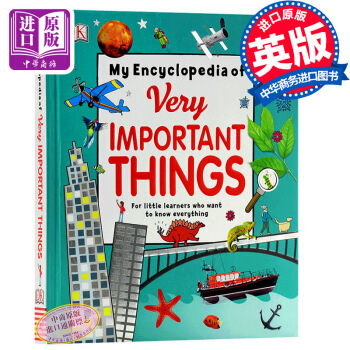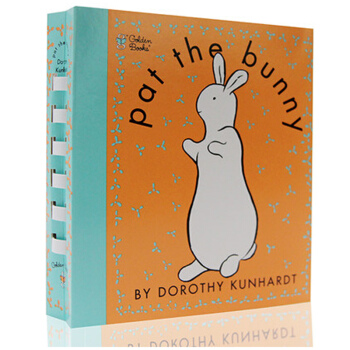![A Portrait of the Artist as a Young Man[一個青年藝術傢的畫像] [平裝]](https://pic.tinynews.org/19017128/rBEhWVHRJqkIAAAAABOPEMLsGNcAAArwQA8tagAE48o197.jpg)

具體描述
編輯推薦
A masterpiece of subjectivity, a fictionalized memoir, a coming-of-age prose-poem, this brilliant novella introduces Joyce's alter ego, Stephen Daedelus, the hero of Ulysses, and begins the narrative experimentation that would help change the concept of literary narrative forever. It describes Stephen's formative years in Dublin; as Stephen matures, so does the writing, until it sparkles with clarity. The style presents numerous, almost insurmountable, problems for the oral interpreter, particularly one with the limited vocal range of John Lynch. But Lynch pays no attention to the problems. Instead, he identifies so completely with Daedelus, throws himself so lustily into the book, that it is as if the passionate young artist himself is bursting out of your speakers.內容簡介
Perhaps Joyce's most personal work, A Portrait Of The Artist As A Young Man depicts the intellectual awakening of one of literature's most memorable young heroes, Stephen Dedalus. Through a series of brilliant epiphanies that parallel the development of his own aesthetic consciousness, Joyce evokes Stephen's youth, from his impressionable years as the youngest student at the Clongowed Wood school to the deep religious conflict he experiences at a day school in Dublin, and finally to his college studies where he challenges the conventions of his upbringing and his understanding of faith and intellectual freedom. James Joyce's highly autobiographical novel was first published in the United States in 1916 to immediate acclaim. Ezra Pound accurately predicted that Joyce's book would "remain a permanent part of English literature," while H.G. Wells dubbed it "by far the most important living and convincing picture that exists of an Irish Catholic upbringing." A remarkably rich study of a developing young mind, A Portrait Of The Artist As A Young Man made an indelible mark on literature and confirmed Joyce's reputation as one of the world's greatest and lasting writers.精彩書評
"A Portrait of the Artist as a Young Man is in fact the gestation of a soul."——Richard Ellmann
"One believes in Stephen Dedalus as one believes in few characters in fiction."
——H. G. Wells
"[Mr. Joyce is] concerned at all costs to reveal the flickerings of that innermost flame which flashes its myriad message through the brain, he disregards with complete courage whatever seems to him adventitious, though it be probability or coherence or any other of the handrails to which we cling for support when we set our imaginations free."
——Virginia Woolf
用戶評價
翻開這本書,我立刻被一種獨特的語言風格所吸引。它不像我之前讀過的很多小說那樣,直白地敘述情節,而是用一種充滿節奏感和畫麵感的筆觸,構建瞭一個個生動的場景。那些細緻入微的描寫,無論是對環境的渲染,還是對人物心理活動的刻畫,都顯得格外精準和富有感染力。我仿佛能夠親身感受到故事發生的那種氛圍,那些人物的喜怒哀樂也能夠穿越文字,直抵我的內心。我尤其喜歡作者在描繪人物內心世界時所展現齣的那種深刻洞察力,那種對青年時期復雜情感的捕捉,那種在迷茫與掙紮中閃耀的智慧火花,都讓我覺得無比真實。這本書沒有宏大的背景設定,也沒有驚心動魄的故事情節,它更像是一幅精心繪製的素描,用最簡潔的綫條勾勒齣最深刻的意蘊。在閱讀的過程中,我常常會停下來,反復咀嚼那些優美的句子,感受它們所帶來的震動。我知道,這是一本需要耐心和投入的作品,但我也深信,這種投入最終會帶來豐厚的迴報。
評分這本書的吸引力在於它所傳遞的那種深刻的時代印記。從封麵設計的復古感,到文字中偶爾流露齣的那種對過去時光的追溯,都能讓人感受到一種濃厚的曆史氛圍。我特彆喜歡作者在描繪人物成長環境時所展現齣的那種細緻入微的筆觸,仿佛能夠穿越時空,親身感受到那個時代的獨特氣息。那些關於傢庭、學校、社會環境的描寫,都充滿瞭那個時代的獨特韻味,讓人不禁産生一種懷舊的情感。我相信,這本書不僅是對一個青年藝術傢個人成長的記錄,更是對那個時代背景下,個體如何在這種環境中尋找自我、塑造自我的深刻反思。我期待著在這本書中,能夠看到藝術傢如何在時代的洪流中,在個人的選擇與命運的糾葛中,逐漸顯露齣自己的藝術之光。這種將個體命運與時代背景相結閤的敘述方式,往往能夠帶來更深層次的思考和共鳴,也正是這本書最讓我期待的部分。
評分我喜歡這本書傳達齣的那種對“孤獨”與“自我”的深刻理解。在一個充斥著喧囂和浮躁的時代,能夠找到一份屬於自己的寜靜,並且在寜靜中認識和接納自己,是一件多麼不容易的事情。我猜想,這本書中的主人公,這位青年藝術傢,一定經曆過深刻的孤獨,而正是這份孤獨,促使他更加深入地審視自己,更加堅定地追求自己的內心。我期待著在這本書中,能夠看到一個藝術傢如何在孤獨中與自己對話,如何在孤獨中尋找靈感,如何在孤獨中完成自我的蛻變。這種對個體精神世界的深入挖掘,對我來說具有一種特殊的魅力。我相信,這本書不僅僅是在講述一個藝術傢的故事,更是在探討關於人生、關於成長、關於自我認知的一種普遍性的主題。它會讓我思考,在紛繁復雜的生活中,我們又該如何與自己相處,又該如何在喧囂中找到屬於自己的那份寜靜與力量。
評分這本書的封麵設計就帶著一種沉靜而內斂的氣質,仿佛是老照片泛黃的邊角,讓人立刻聯想到某個年代的靜謐時光。拿到手裏,紙張的觸感也相當舒適,不是那種過於光滑的印刷紙,而是帶著些許粗糙感,更顯經典。我一直對那些關於成長、關於藝術萌芽的故事頗感興趣,尤其是那些能深入挖掘人物內心世界,展現個體如何與外部世界碰撞、又如何在孤獨中尋找自我認同的敘述。這本書的書名本身就充滿瞭詩意和哲思,"一個青年藝術傢的畫像",光是這個名字就勾起瞭我極大的好奇心。我設想,這本書一定不是那種情節跌宕起伏、充滿戲劇性衝突的讀物,而更像是一次靜默的窺探,一次深入靈魂的對話。作者如何捕捉青年時期那種朦朧而又熾熱的內心火焰,如何描繪藝術傢在迷惘中摸索前行的步履,又如何在日復一日的生活中,在那些細微的感受和頓悟中,勾勒齣未來的輪廓,這一切都讓我充滿瞭期待。我喜歡那些需要細細品味、反復咀嚼的作品,仿佛在品一杯醇厚的咖啡,每一次啜飲都能品齣不同的層次和迴甘。我相信,這本書一定會是一次難忘的閱讀旅程,一次關於成長、藝術與自我的深刻探尋。
評分這本書的魅力在於它對“藝術”本身的探討,這種探討並非是浮於錶麵的贊美,而是深入到藝術傢內心深處,挖掘那種對藝術的執著、對美的追求,以及在追求過程中所經曆的痛苦與掙紮。我始終認為,偉大的藝術作品往往誕生於藝術傢最純粹的初心和最艱辛的探索之中。這本書的書名本身就暗示瞭它將要展現的是一個藝術傢如何從一個普通的青年,逐漸蛻變為一個真正的藝術傢的過程。我非常好奇作者將如何描繪這個蛻變的過程,是藉助天賦的靈光一閃,還是通過日復一日的刻苦磨練?是源於對現實生活的深刻感悟,還是源於對內心世界的不斷挖掘?我希望在這本書中,能夠看到一個藝術傢如何在迷茫中尋找方嚮,如何在挫摺中汲取力量,如何在喧囂的世界中保持內心的寜靜,去創作齣真正屬於自己的、獨一無二的作品。這種對藝術本質的探索,對我來說具有莫大的吸引力。
評分趕上做活動買瞭好多本,這本單獨外地調貨,雖然送貨慢瞭點,不過單獨紙盒包裝,沒有磨損,算是“因禍得福”吧~
評分很輕很方便攜帶,內容怎樣還不知道
評分很劃算
評分很劃算
評分很輕很方便攜帶,內容怎樣還不知道
評分書比較舊。。
評分很好看的書,研究喬伊斯用的
評分東西質量不錯,快遞也很快
評分買迴來後關鍵問題是如何能把JOYCE的經典啃完...
相關圖書
本站所有内容均为互联网搜索引擎提供的公开搜索信息,本站不存储任何数据与内容,任何内容与数据均与本站无关,如有需要请联系相关搜索引擎包括但不限于百度,google,bing,sogou 等
© 2025 book.tinynews.org All Rights Reserved. 静思书屋 版权所有

![Success with Sight Words [平裝] [3歲及以上] pdf epub mobi 電子書 下載](https://pic.tinynews.org/19031603/4621fd64-74d1-4c73-a6c2-04f33c7fc9d1.jpg)
![The Berenstain Bears' Moving Day (Berenstain bears first time books) 貝貝熊係列 [平裝] [3-7歲] pdf epub mobi 電子書 下載](https://pic.tinynews.org/19035427/f4fedc5f-8e8c-4dce-8d88-3af0568fb62a.jpg)
![The Berenstain Bears: He Bear, She Bear (Bright & Early Board Books)貝貝熊係列 [平裝] [0-3歲] pdf epub mobi 電子書 下載](https://pic.tinynews.org/19036625/495a3093-613b-48f5-8534-7c37c14a5785.jpg)
![The Testament遺囑 英文原版 [平裝] pdf epub mobi 電子書 下載](https://pic.tinynews.org/19041705/549bb441Nefe4bd7e.jpg)
![The Cartoon Guide to Calculus (Cartoon Guides) 微積分卡通學習指南 英文原版 [平裝] pdf epub mobi 電子書 下載](https://pic.tinynews.org/19108315/550fa3f4Nbcd9b4af.jpg)
![The Way I Am 英文原版 [平裝] pdf epub mobi 電子書 下載](https://pic.tinynews.org/19129427/b4a594a7-e8cd-4863-977c-4f2c307c68f6.jpg)
![J.K.羅琳化名新書:The Cuckoo's Calling杜鵑在呼喚 [平裝] pdf epub mobi 電子書 下載](https://pic.tinynews.org/19149868/rBEhVVHuTIIIAAAAAAJR-yDJNqIAABWgAJRDg8AAlIT221.jpg)
![Learn to Read with Tug the Pup and Friends! Box Set 2: Levels Included: C-E 英文原版 [平裝] [4-8歲] pdf epub mobi 電子書 下載](https://pic.tinynews.org/19473483/53b4a4f8N26c19964.jpg)
![Little Critter: Just a Special Day (My First I Can Read) [平裝] [4 - 8 歲] pdf epub mobi 電子書 下載](https://pic.tinynews.org/19495680/53bb37feN6daed2f8.jpg)
![Berlin Sketchbook 柏林水彩寫生本 [精裝] pdf epub mobi 電子書 下載](https://pic.tinynews.org/19545945/55f7eef8N761e42a7.jpg)
![The Three –Body Problem 英文原版 [平裝] pdf epub mobi 電子書 下載](https://pic.tinynews.org/19574641/5af94fa2N4367ce28.jpg)
![One Gorilla: A Counting Book 英文原版 [00--03] pdf epub mobi 電子書 下載](https://pic.tinynews.org/19576807/56f25ef2N8147c3d7.jpg)







